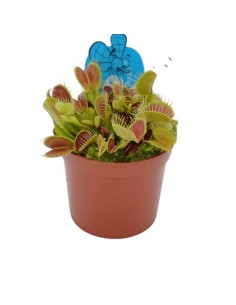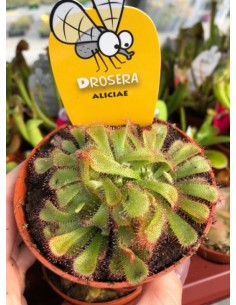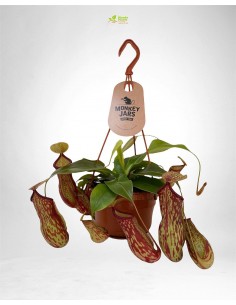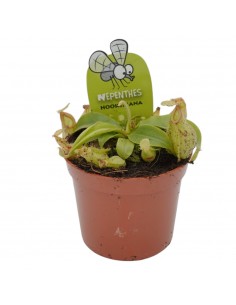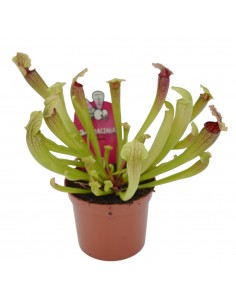Carnivorous Plants: variety, characteristics and cultivation
The first treatise dedicated to these plants is by Charles Darwin who described and cataloged them in 1875. Today we know more than 600 species of carnivorous plants spread all over the world, divided into 12 genera and 5 families. There are many species of carnivorous plants that differ from one another in appearance, in the manner in which they capture their prey, in the area of origin and in numerous other characteristics.
However, those most known are probably the carnivorous plants belonging to the genus Dionaea, to the genus Drosera, to the genus Sarracenia and to the genus Pinguicula and Nepenthes.
- THE TRAPPING MECHANISMS
The mechanisms for trapping prey are different and vary depending on the species. In general we distinguish:
Adhesive traps: the leaves secrete a sticky mucilage in which the preys remain entangled
Trap trap: the leaves snap to close when the insect approaches and immobilized inside the leaves
Ascidian traps: organisms are trapped in a carafe-shaped leaf that contains digestive enzymes and bacteria.
Trap traps: they are activated by a thick and thick hair that forces the prey inside the digestive organ of the plant.
Suction traps: the organism is literally sucked into a sort of bladder (utricle) able to create a pressure vacuum.
In order to catch a prey, carnivorous plants must first of all be able to attract the unfortunate insect, arthropod or small animal to them. To do this, these plants can use different "stratagems", such as visual stimuli (carnivorous plant traps can present colored spots) or through olfactory stimuli (some carnivorous plants are capable of producing sweet scents able to attract insects).
Once the animal prey has been attracted to the plant, the deadly entrapment mechanisms of carnivorous plants prevent it from escaping, condemning it to certain death. Digestion occurs by means of special digestive fluids rich in enzymes (protease, phosphatase, ribonuclease , etc.) that can be produced independently from the plant, or from bacteria present in the digestive organ.
- TYPES OF CARNIVOR PLANTS
In general, we can mention some species of greater diffusion that also include semi-carnivorous varieties.
• Dionea muscipula: plant belonging to the Droseraceae family. Also known as Venus acchiappamosche, it is one of the few carnivorous plants capable of activating a sneaker movement thanks to the tactile sensors present in the mouth.
• Drosera: plant belonging to the Droseraceae family. It has leaves covered with viscous hair and very spectacular colors. When the prey is close enough, it activates a rolling movement of the leaf that leaves no way out.
• Nepenthes: a climbing plant belonging to the Nepenthaceae family. It attracts the prey inside its ascidium that contains a digestive liquid ready to liquefy the victim.
• Pinguicula: plant belonging to the Lentibulariaceae family. Its leaves are rich in glands that secrete a viscous liquid that is deadly to the victims.
• Sarracenia: plant belonging to the Sarraceniaceae family. It is able to attract the victim into its ascidian thanks to the perfume it produces.
- CULTIVATION AND CARE
First of all it is necessary that they are always wet, not just wet, just wet, immersed. You can continuously water it or immerse it in a little water that will be added often, or use the simplest method which consists in using a very deep saucer, a tray, a large bowl where the semi-immersed jar will be placed in the water.
Carnivorous plants can grow in the wet soil even half immersed, but most carnivorous plants prefer wet, but not soaked, soil to around 1/4 of water around the saucer.
Water should always be added to the saucer container and never to the ground directly. In this way we avoid washing away the sticky mucilage of the sundas and other varieties and avoid closing the valves.
WATER: For carnivorous plants always use demineralized water, such as rainwater or distilled water.
SOIL: Nutrient-poor soils adapted to carnivorous plants are often rich in peat and sand. This type of environment can be recreated using sphagnum peat, but not other types of peat that are too rich in minerals. The sand must be clean and washed. Sand can be used for games or horticultural sand, indifferently, provided it is well cleaned.
LIGHT: Carnivorous plants, as a general rule, grow best in sunny conditions; only a few prefer partial sun exposure, generally those that appear more delicate and low, which are those that grow in the marshes.

